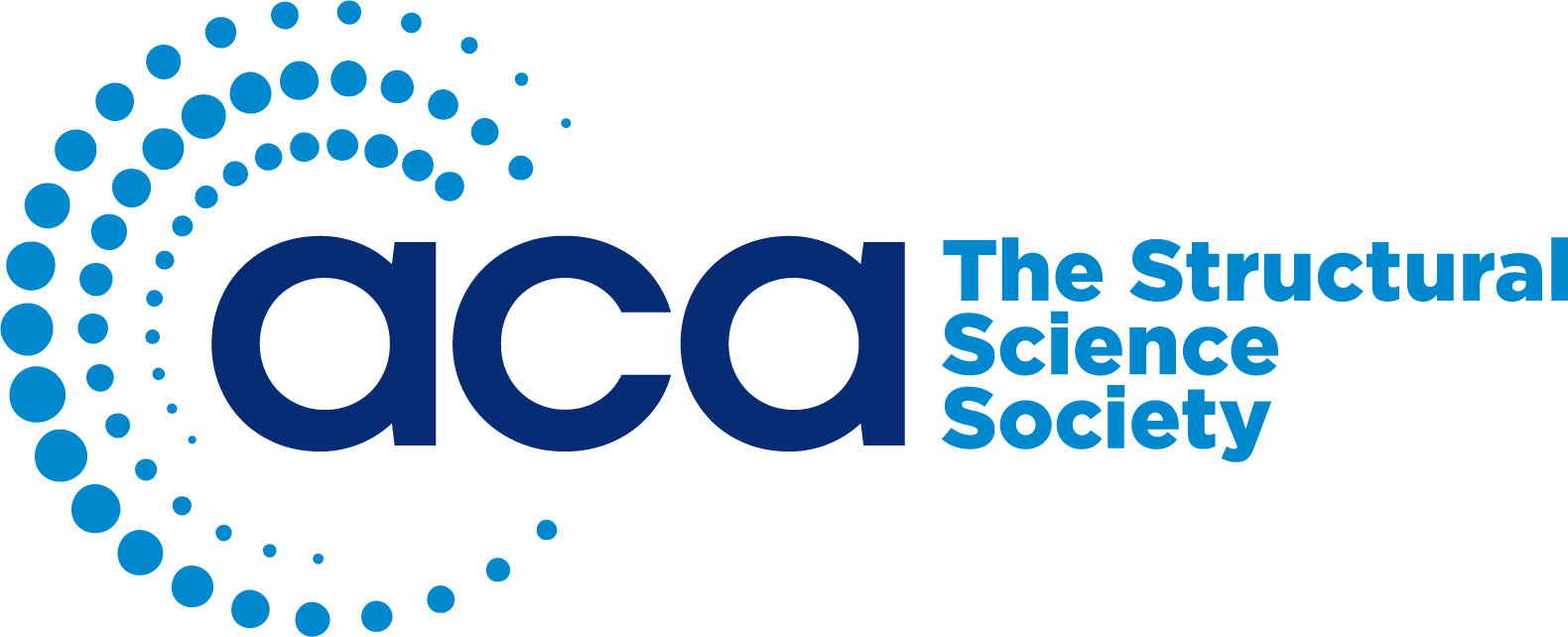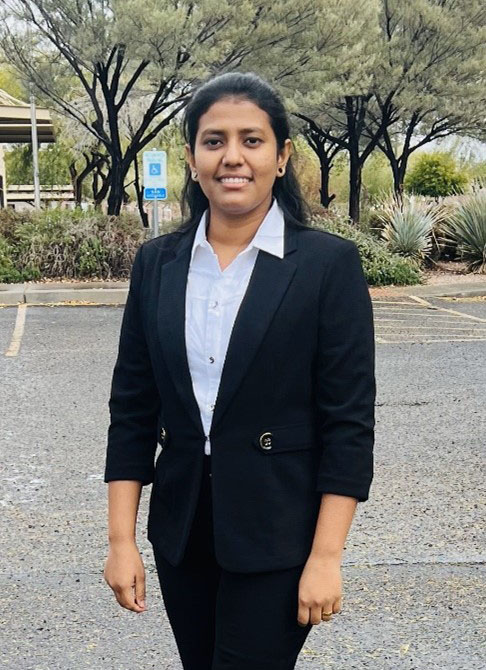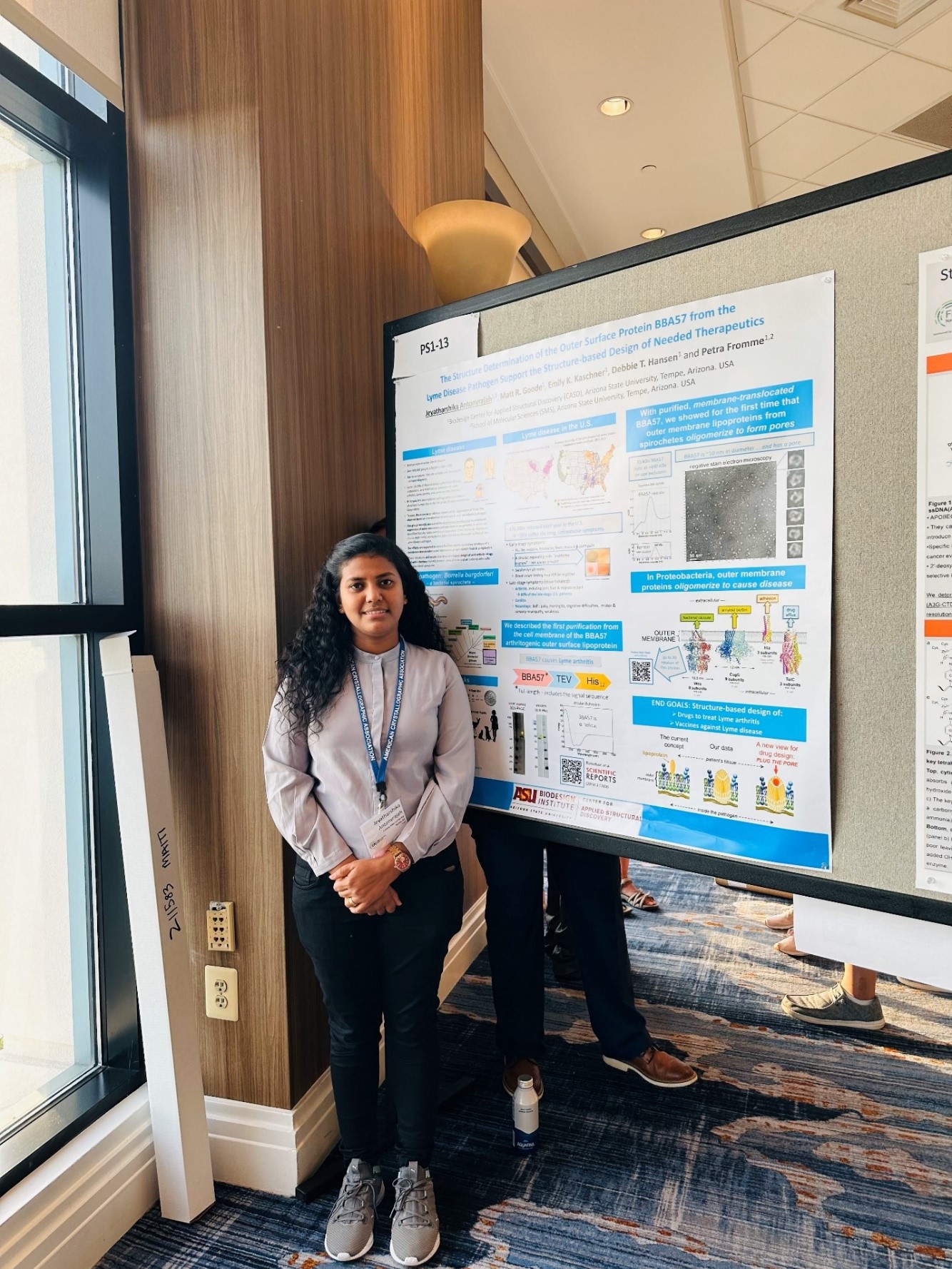- Home
- About ACA
- Publications & Resources
- Programs
- Annual Meeting
- Membership
- -History-
- ACA Video Library
ACA Early Career Scientist Spotlight-24
Personal Statement"Almost all aspects of life are engineered at the molecular level, and without understanding molecules, we can only have a very sketchy understanding of life itself." This quote by Francis Crick best explains my passion for research. Every single breakthrough that eradicates human suffering in some way is built upon a chemical foundation. The interest and involvement I had in science from a young age were obvious. Growing up in a village in Mullaitivu, Sri Lanka, my curiosity for the wonders of science was sparked at an early age. One summer day at my home stands out vividly in my memory — a day when a simple convex lens transformed my perspective—and became a gateway to scientific exploration. Intrigued by the potential of focusing sunlight, I enthusiastically embarked on a mission to make fire using a convex lens and cotton. As the focused beams ignited a tiny flame, the thrill of understanding and manipulating natural phenomena ignited a lifelong passion for science within me. This passion further flourished as I eagerly dipped mirrors into buckets of water, creating vibrant rainbows that danced across surfaces. My schoolteachers recognized my enthusiasm and encouraged me to study science in depth. This encouragement, together with my parents’ support, boosted my thirst for more knowledge, which drove me to explore different science topics.
I am inspired by the words of Dr. APJ Abdul Kalam, who once said, "Dream, dream, dream. Dreams transform into thoughts, and thoughts result in action." I embraced the idea of dreaming big and transforming those dreams into tangible scientific contributions. When everyone stepped into the biology stream with the aim of becoming a doctor, I moved forward with the question, “Why should I practice medicine rather than invent medicine?” To find an answer to my question, I realized I should pursue a degree in biochemistry and molecular biology. That drove me toward earning my doctorate in biochemistry, and this will support my goal of becoming a research scientist. Structural biology, to me, is a captivating journey into the hidden world of molecular architecture. Excitement lies in the ability to visualize and comprehend the three-dimensional arrangement of atoms, unlocking the secrets of biological processes. My research is under the mentorship of Dr. Petra Fromme, who is an international leader in photosynthesis, protein macromolecular crystallography using synchrotrons, and protein nano crystallography using X-ray free electron lasers. Our lab employs X-ray crystallography and cryo-electron microscopic techniques to unravel the three-dimensional molecular structures of proteins that underlie bioenergy processes as well as membrane proteins that are critical to health and disease. My research supports the structure-based discovery of needed therapeutics to prevent and treat Lyme disease and upgrade the quality of human life. I am fully confident in my potential to contribute to innovative research at Arizona State University by determining the structure of the outer membrane protein BBA57, which is believed to be the main culprit behind chronic Lyme arthritis. Lyme arthritis is a major complication for people who suffer from the long-term form of Lyme disease. My project is exceptionally challenging because I am applying an approach that is unique in the field of Lyme disease, which is the structure of an outer membrane protein following its purification directly from the bacterial membrane. My graduate research efforts have, therefore, been focused on establishing novel methods for purification and structural analyses of membrane-embedded cell surface virulence determinants from spirochetal pathogens.
This early presentation experience helped shape how I develop scientific posters. Two months later, I earned a People’s Choice Award at the ASU Biodesign Institute’s annual retreat and the Pauling-Sundaralingam Award for my poster at the 2023 ACA meeting in Baltimore. This award was especially gratifying because, like me, Dr. Muttaiya Sundaralingam is from Sri Lanka. Now, as a third-year graduate student, I am passing on my knowledge by training a first-year graduate student in Dr. Fromme’s lab. When I complete my Ph.D., I see myself becoming a research scientist. I hope to use my new knowledge and experience to reveal the molecular mechanisms behind world-threatening diseases and develop therapeutic approaches to combat them. My passion for this research will always be the motivation for my journey, as it has been until now. |



 In my second month in the lab of Dr. Fromme, I had the opportunity to represent my Lyme arthritis project for potential funding at an annual event with ASU Women and Philanthropy. This group of local women philanthropists has provided funding since 2002 for a diverse range of projects at ASU that include STEM fields, social sciences, fine arts, business, and journalism. Alongside Dr. Fromme and my other research mentor, Associate Research Professor Dr. Debra T. Hansen, I used everyday language to present our highly technical approach to over 200 philanthropists. Our presentation table included a public-friendly poster, three-dimensional models showing examples of other outer membrane proteins, and representations of both the spiral-shaped pathogen and the tick pest that houses and transmits the pathogen. Our presentation won full funding that supported my research for one year.
In my second month in the lab of Dr. Fromme, I had the opportunity to represent my Lyme arthritis project for potential funding at an annual event with ASU Women and Philanthropy. This group of local women philanthropists has provided funding since 2002 for a diverse range of projects at ASU that include STEM fields, social sciences, fine arts, business, and journalism. Alongside Dr. Fromme and my other research mentor, Associate Research Professor Dr. Debra T. Hansen, I used everyday language to present our highly technical approach to over 200 philanthropists. Our presentation table included a public-friendly poster, three-dimensional models showing examples of other outer membrane proteins, and representations of both the spiral-shaped pathogen and the tick pest that houses and transmits the pathogen. Our presentation won full funding that supported my research for one year.


















